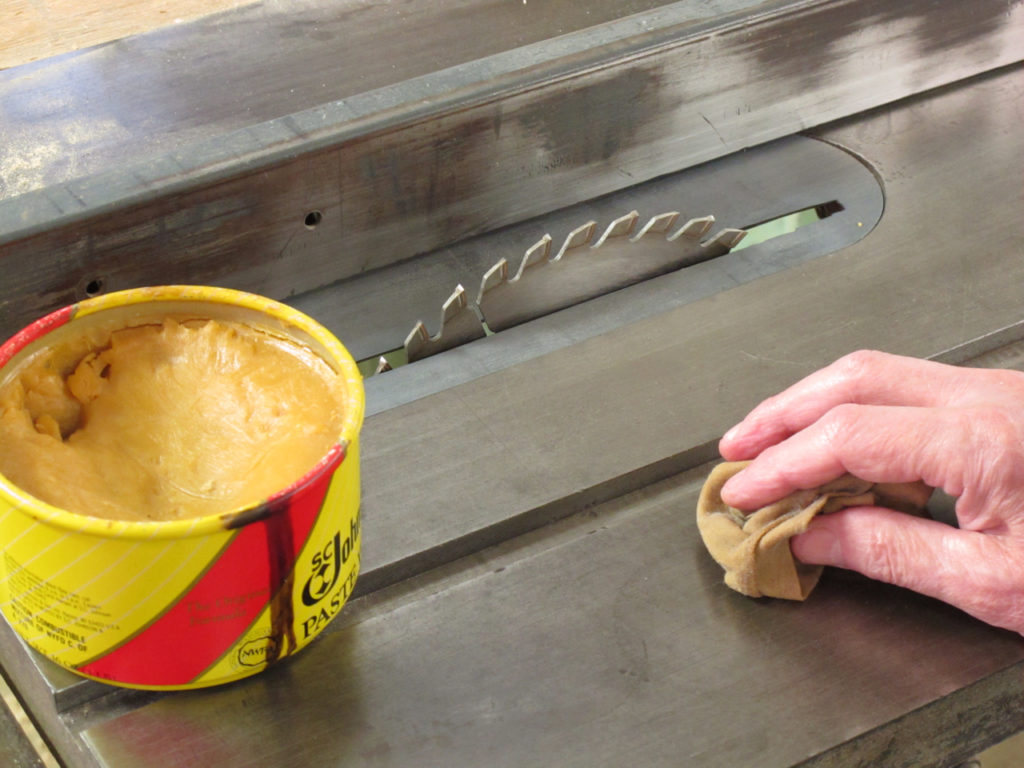We may receive a commission when you use our affiliate links. However, this does not impact our recommendations.

If you want to make the tops of your stationary machinery slicker, use paste wax. Don’t use furniture polish.
In my recent postings, I’ve been writing about silicone oil and fish eye. So a few days ago I was having a deep discussion with a friend about paste wax, and it reminded me of the time I was in a friend’s shop and noticed him spraying Pledge on the top of his table saw. He explained that it was to reduce the resistance to boards he was pushing through the saw.
NO! Don’t do that.
Don’t use a furniture polish that contains silicone oil on any tabletops in your shop that may come in contact with wood (most aerosols contain silicone oil). In fact, don’t spray any aerosol furniture polish in your woodworking shop because the mist may float and settle on some wood you intend to use for a project. This may lead to the fish eye problem I’ve been describing.
If you want to make the tabletops on your stationary machinery (table saw, bandsaw, jointer, etc.) slicker, use paste wax. But stay away from paste waxes for cars because many contain silicone oil (for better shine and water repellence). Instead, use a paste wax marketed for floors and furniture. Manufacturers don’t include silicone oil in these paste waxes because the silicone oil will make floors slicker, making it more likely that people could slip and fall.
As I’ve written before, if you don’t need the added the color that many imported paste waxes contain, try common old Johnson’s Paste Wax. It’s my favorite because it dries rapidly, so you don’t have to wait long before buffing off the excess, and it’s cheap.
Don’t get drawn in by all the hype surrounding imported paste waxes. Except for the added color, the only significant difference in paste waxes is the evaporation rate of the solvent included to make the wax workable. I generally find that it’s easier to work with waxes that develop their resistance quickly, which tells you that it’s time to buff off the excess.
Here are some supplies and tools we find essential in our everyday work around the shop. We may receive a commission from sales referred by our links; however, we have carefully selected these products for their usefulness and quality.









I use briwax and have for years. I use it on router bases, table saw, band saw, joiner, or just about anything that slides.
I remember skating over the floors in old socks to buff them up. That was a long time ago.
But yes Johnson’s is my favorite for the table saw and my workbench. Glue drips come off easily.
I love Johnson’s Paste Wax (JPW). I use it for all my tool tables. I took a class from Frank Klauz. The finish for the project we made was a couple of coats of shellac followed by, you guessed it, JPW
Bob Flexner show how to use Paste Wax for Table Saws & Machinery. Paste Wax very comfortable any woodmaker work. It’s works well better than oil. Paste Wax usable easily for it’s available in the local hardware store any time. furniture
I use Lundmark Caranuba paste wax available in the local hardware store. Johnson’s is too thin for my liking. I used to use Butchers Bowling Alley wax but it’s not made any more. As a rust inhibitor, I’ve found paste wax to work much better than oil in my unheated garage shop.